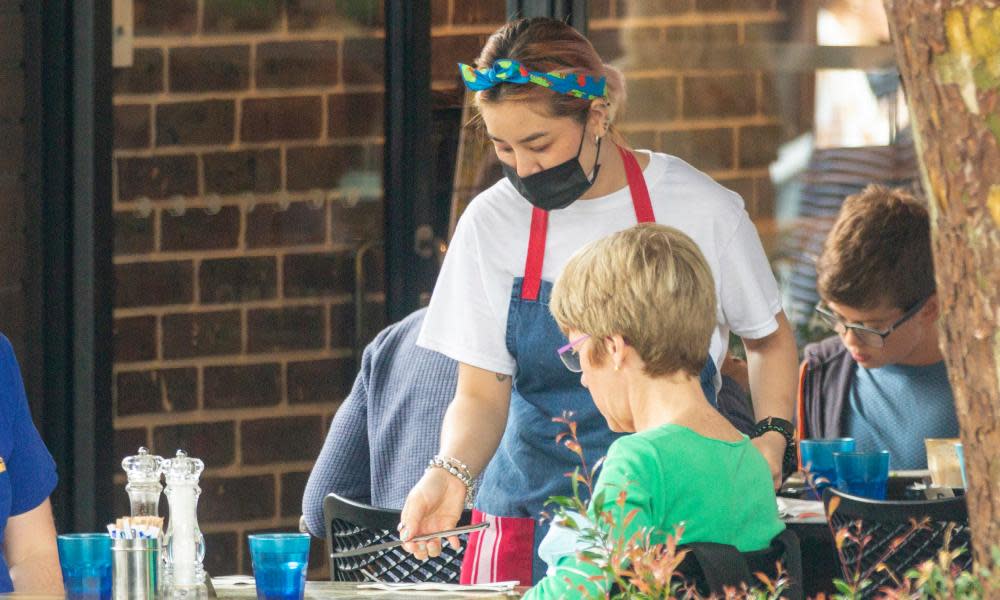Don't read too much into the fall in Australia's payroll jobs, at least not yet

The latest release of the payroll jobs index showing a 6% fall in jobs in the past month might suggest that unemployment is about to rise. But closer inspection reveals that despite the usual drop in work in January, employment overall is holding up well. However, full-time work still has a way to go.
Since the pandemic, the Australian Bureau of Statistics has, in association with the ATO, begun releasing a weekly payroll job index that has provided some more current insight into how jobs are going than we get from the monthly labour force figures.
And so it might be worrying to find that payroll jobs have dropped by almost as much from the start of December to the beginning of January as occurred when the pandemic hit last March:
This is especially so when you consider that the monthly employment figures have tracked pretty well with the payroll job index:
But does this mean that employment is about to take a massive hit and unemployment will again rise?
Probably not.
The reason is that the payroll job numbers are unadjusted, whereas the unemployment rate and employment figures you hear talked about each month (and will again tomorrow, when the December figures come out) are “seasonally adjusted”.
Related: Australia's economy is faring better than most – but that’s not saying much | Greg Jericho
This is because every year things occur in some months that really have no bearing on the strength of the labour market or the economy.
Every January, for example, regardless of what happened in December, people lose their jobs. This is because December, regardless of what happened in November, is a big job-hiring month, but many of those jobs (because of Christmas and the summer holidays) are temporary.
And so every year in January a lot of people stop working:
So what the ABS does is calculate a “seasonally adjusted” measure, which takes into account what usually occurs in each month.
The difference is so great that in January last year the ABS estimated there were 158,000 more people employed in “seasonally adjusted” terms than in the “original” unadjusted data:
Neither number is “right” or “wrong”, it is just that the seasonally adjusted figure provides necessary context and so everyone except economists and statisticians ignores the original data.
But because the payroll jobs index is unadjusted, it has shown that usual big drop in jobs in January.
At least it is not due to Victoria, which saw a similar fall in payroll jobs as every other state:
But if we compare this January’s figures with last year’s it can at least give us some idea of how we are going.
Across the states, South Australia and Western Australia are doing the best and Tasmania and Victoria are doing the worst:
Interestingly, women are doing better overall than men, but again some care needs to be taken with this as the numbers don’t precisely match up because the ABS does not have precise data for the gender of all payroll job holders (but it does for “people”).
But, that aside, it does appear that women have come out of the pandemic with more work relative to where they were this time last year compared with men.
The growth of work across ages also shows that those over 60 have suffered the most:
It also suggests that those in their 20s are mostly doing better than older workers – perhaps as a result of the government’s jobmaker hiring credit for workers under 35.
But that 6.7% fewer men and 5.8% fewer women in their 60s are working in jobs now compared with a year ago suggests that the pandemic recession, like most recessions before it, has been particularly brutal for those nearing retirement.
It has also been brutal for those working in hospitality – payroll jobs in accommodation and food services are down 11.4% compared with last year, while jobs in education and public administration are well up:
But, again, this is where some care needs to be taken. These figures would suggest construction work is doing worse compared with last year than is the arts and recreation industry.
That might be the case but, given the ongoing impact of the pandemic on the arts sector and the usual lack of construction work in January, it is best to wait before making any grandiose statements.
It highlights that while the payroll job numbers provide some insight into how things are travelling, they have a few holes in them.
Most importantly they don’t tell us whether these jobs are full or part-time.
And we know that part-time work has surged in the last half of 2020, while 1.7% fewer people are employed full-time than were before the pandemic hit:
And so, while the payroll job figures are not as bad as they first appear, the concern about how employment will look after this pandemic remains unclear and will until we get more data with greater context.

 Yahoo Movies
Yahoo Movies 
